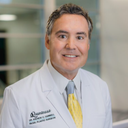Posted underEyelid Surgery q&a
I have scars on upper lids 6 months after blepharoplasty. Is there something I can do to help them heal? (photos)
Have gone back to original doc three times and have tried laser treatment and kenalog injections. Nothing has worked.
Answers (7)
From board-certified doctors and trusted medical professionals
Dr. John R. Burroughs, MD
Oculoplastic Surgeon, Board Certified in Ophthalmology
Answer
Dr. Mark Taylor, MD
Dermatologic Surgeon, Board Certified in Dermatology
Answer
Dr. Devinder S. Mangat, MD, FACS (retired)
Board Certified Facial Plastic Surgeon
Answer
More Eyelid Surgery Questions
See all Eyelid Surgery Q&AWE SEND PRETTY
EMAILS
What’s trending? Who’s turning heads? Which TikTok myths need busting? We’ve got you. No fluff, no gatekeeping—just real talk. Get our free, unfiltered newsletter.

